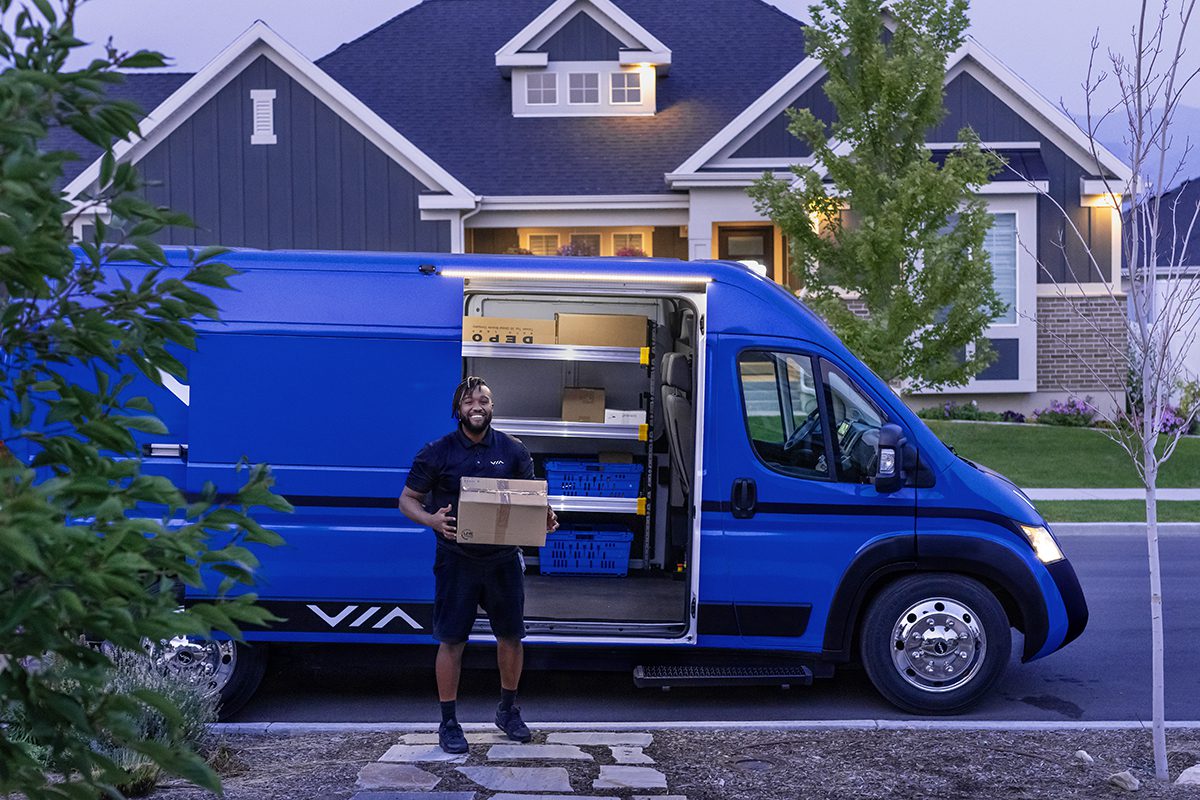During the last few years, last-mile delivery providers have seen a substantial uptick in business, as consumers have become more and more accustomed to purchasing goods online. This increased demand has put a spotlight on another issue — recruiting and retaining good drivers.
According to recent forecasts, the last-mile delivery market share is expected to increase by $143.75 billion from 2021 to 2026, with 39% of that staked out for North America alone. Delivery giants like Amazon, DHL, FedEx, and UPS are all actively searching for ways to not only increase their share of the market, but also provide the drivers to make that final stretch of the delivery, via vans and step vans.
At the same time, these companies and many others are looking to curb the increase in emissions caused by this market growth by investing in clean vehicle technologies, such as electric vehicles (EVs). Amazon and FedEx have pledged to be net-zero carbon by 2040, with UPS committing to the same by 2050. And with all the noise in the EV market with talk of EV-only sales now and in the near future, it can get a little daunting for fleets to make the right choice — for their business, their clients, and their drivers.
’Boarding Into the EV Market
VIA Motors will produce fully electric commercial vehicles to fit a number of different fleet applications, with production beginning in late 2023. Taking a diverse approach to EVs, VIA and its engineers have designed a modular and scalable skateboard-based platform for Class 2-6 vehicles that offers fleets several body styles, including cargo van, step van, cab chassis, and cutaway configurations. These options are perfect for the last-mile sector, as there are a wide range of goods that need to be dropped off at doorsteps.
Sitting down with fleet customers, the VIA team personalizes its vehicle to meet the requirements of industry-leading fleets by taking into account factors such as routes, area climate/weather, route elevation gains, speeds, range requirements, and cargo capacity. They also consider those that will spend the most time with the VIA EVs — the drivers.
Ergonomically Approaching the Driver Issue
Fleets from every class size are experiencing a driver shortage. No matter the conditions, the wages, or the work hours, fleets are having trouble finding — and retaining — good drivers. Electric vans and trucks can positively contribute to driver satisfaction, offering cutting-edge technology that is piquing the interest of an increasing portion of the driver pool.
According to the North American Council on Freight Efficiency’s Run on Less – Electric Demonstration, drivers are pushing for EVs to make it into the commercial fleet sector. Testimonies from fleet drivers attest to the fact that EVs offer an improved working environment with less noise, less vibration, and more comfort.
The more packages that need to be delivered in any given route, the more stop-and-go conditions and the more the driver needs to exit and enter the vehicle. With this in mind, VIA crafted its EV platform with a lowered floor height of 21 inches. The reduction of 6 inches equates to climbing approximately 11 flights of stairs every day. This also decreases strain on the back and joints, as well as keeping fatigue at bay.
The EV movement is no longer a prediction, it is a possibility, made possible by the minds of developers and engineers like those at VIA — being there for their customers during each step of the electrification journey, with their business, their clients, and their drivers in mind along the way.
Learn more at viamotors.com


